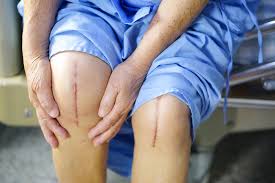A knee surgery—whether due to osteoarthritis, ligament rupture, or meniscus injury—is a major procedure. While physical therapy, mobilization, and pain management are usually the focus, one crucial aspect is often overlooked: scar care.
Scar tissue forms where the skin and deeper structures have been damaged. In knee surgery, this includes not only the surface of the skin, but also fascia, muscles, and nerves. Without proper care, this tissue can lead to restricted movement, tension, or even chronic pain.
Why functional scar care matters
The skin may heal visibly—but what happens beneath the surface often matters more. A scar can become an “interference field”: it may affect body awareness, hinder muscle function, and alter movement patterns. Even small scars can have a lasting impact on gait and posture.
Functional scar treatment, as offered by Uli, addresses exactly this. Through targeted stimulation, gentle manual techniques, and sensorimotor retraining, the scar is reintegrated into the body’s movement system. Adhesions are released, circulation improves, and nervous system balance is restored.
What patients report
Many feel noticeable relief after just a few sessions. Common improvements include:
-
Increased knee mobility
-
Less tension and numbness
-
Better coordination while walking
-
Reduced swelling sensation
-
Emotional relief from the surgical experience
These results show: scar care isn’t just cosmetic—it’s functional rehabilitation.
Conclusion:
Anyone seeking a complete recovery from knee surgery should take targeted scar care seriously. It supports healing at a deeper level and promotes long-term mobility.

